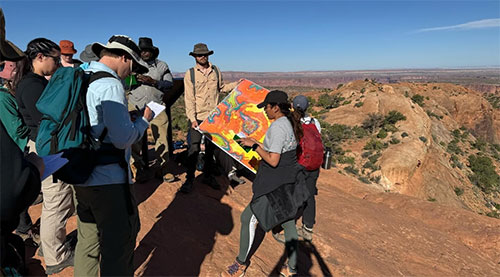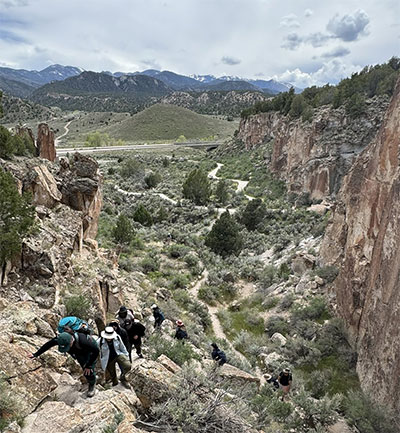Western University’s Planetary Science Research Takes Center Stage in Artemis III Preparations
As NASA gears up for the historic Artemis III mission, Western University is playing a significant role in research

Students consult a topographic map in Canyonlands National Park in Utah
and study for lunar exploration. Arizona, chosen as the site for NASA's astronaut training, is also hosting Western University's Planetary Surface Processes Field School this month, highlighting the university's growing role in space research.
In the San Francisco Volcanic Field, located just north of Flagstaff, Arizona, NASA astronauts Kate Rubins and Andre Douglas are participating in analog moonwalks, a crucial aspect of their preparation for Artemis III.
Meanwhile, Western University’s own Dr. Gordon Osinski, a highly esteemed professor in the Department of Earth Sciences, is also making significant contributions. Dr. Osinski serves as the Director of the Earth and Planetary Materials Analysis Laboratory, Director of the Canadian Lunar Research Network, Chair of the Planetary Sciences Division of the Geological Association of Canada, and Principal Investigator for the Canadian Lunar Rover Mission.
The groundbreaking research being conducted under his leadership will be crucial for future lunar missions.

Students exploring the Joe Lott Tuff series of pyroclastic flows near Sevier Utah
Dr. Osinski leads a group of graduate and undergraduate students on a 13-day field class across various locations in southern Utah and Arizona. Their research focuses on the geology and biology of Moon and Mars sites in North America, providing invaluable insights into extraterrestrial environments. The field class explores locations that share similarities to the Moon and Mars, including meteorite impact sites, volcanic fields, and areas of canyon and valley formation. This region, historically significant as a training ground for Apollo astronauts, serves as a real-world laboratory for Western University's cutting-edge research.
Dr. Osinski’s leadership and research have positioned Western University as a frontrunner in planetary science. His interdisciplinary approach to field studies involves comparing planetology through the study of terrestrial analogues. This provides students with a unique opportunity to contribute to the future of space exploration.
While NASA astronauts and Western University students are currently on two different missions, the significance of Western University’s contribution to Artemis III preparations cannot be overstated. Dr. Osinski’s pioneering research and dedication to advancing planetary science underscore Western University's commitment to shaping the future of space exploration and enhancing the academic learning experience for their students.
Story by Penny Molloy

